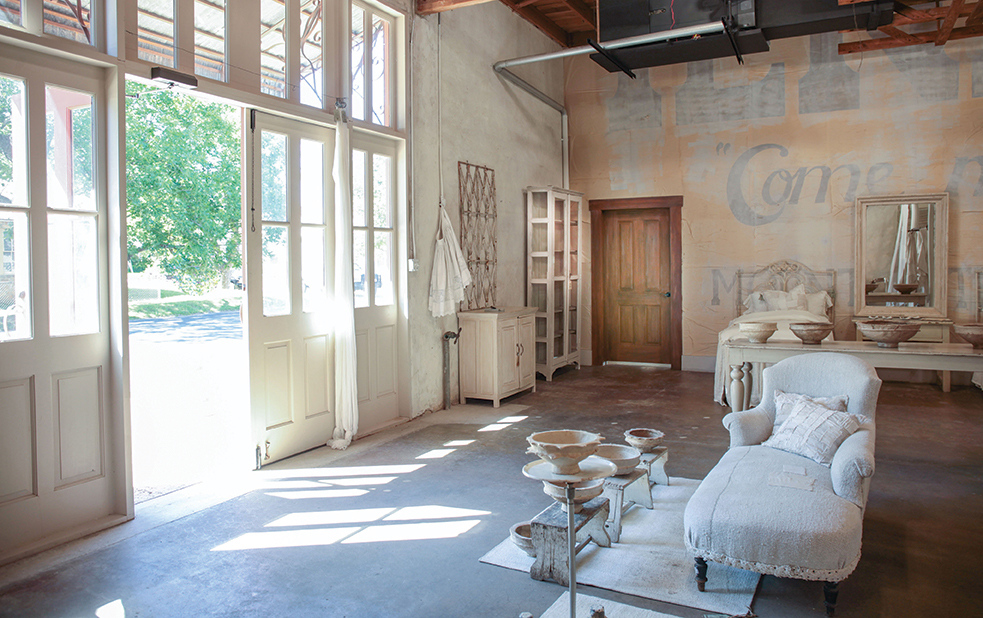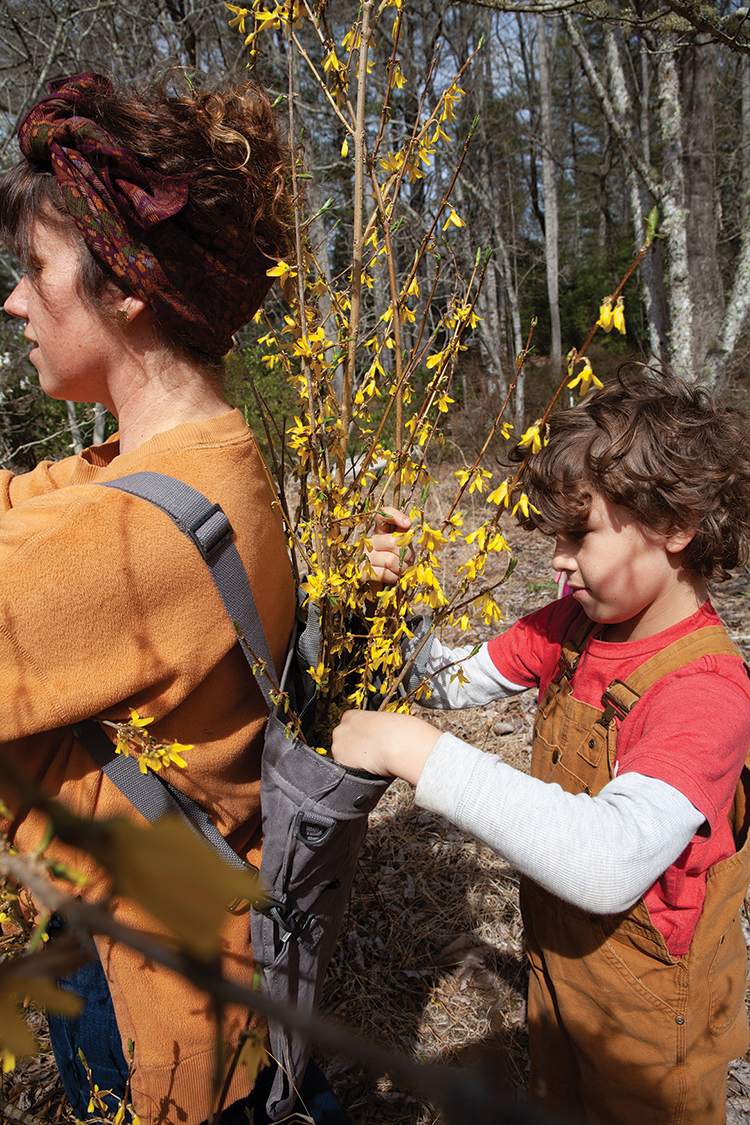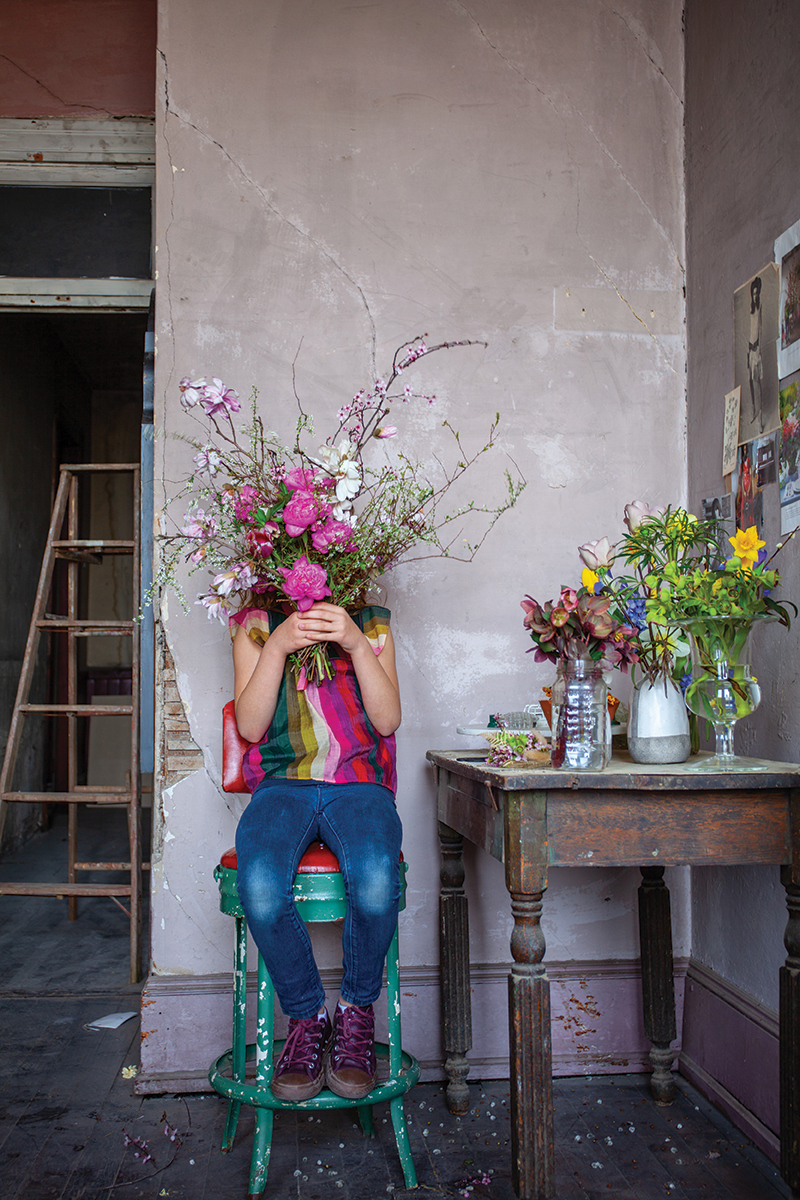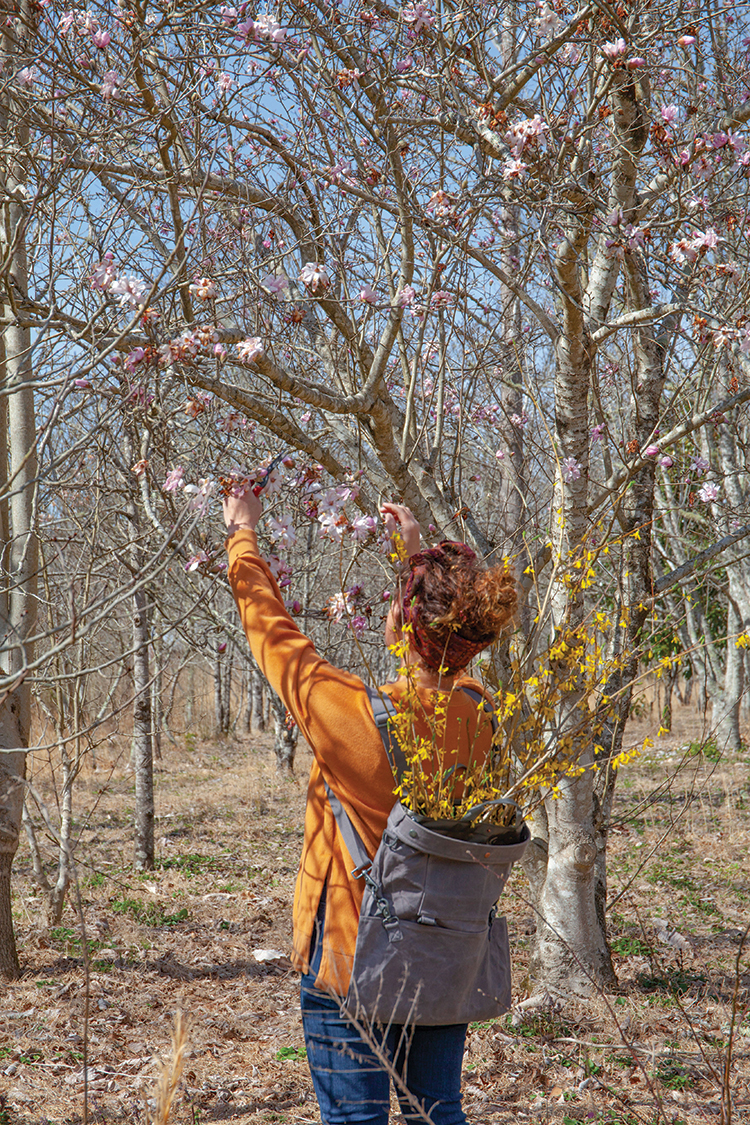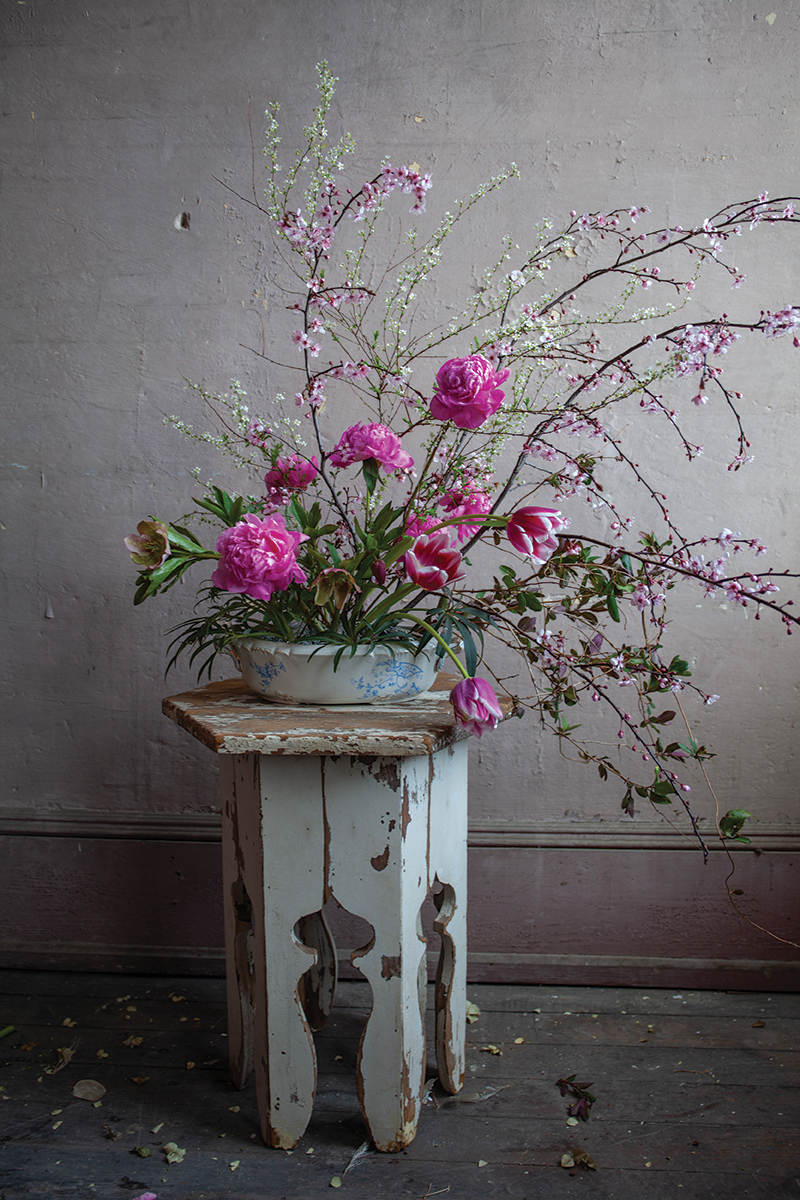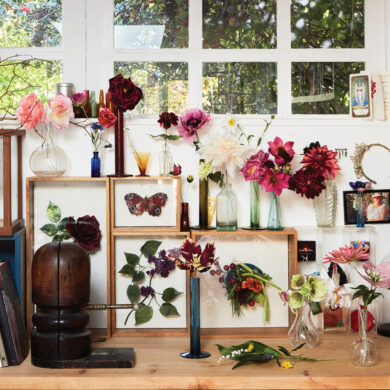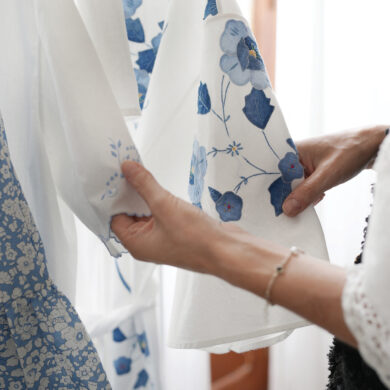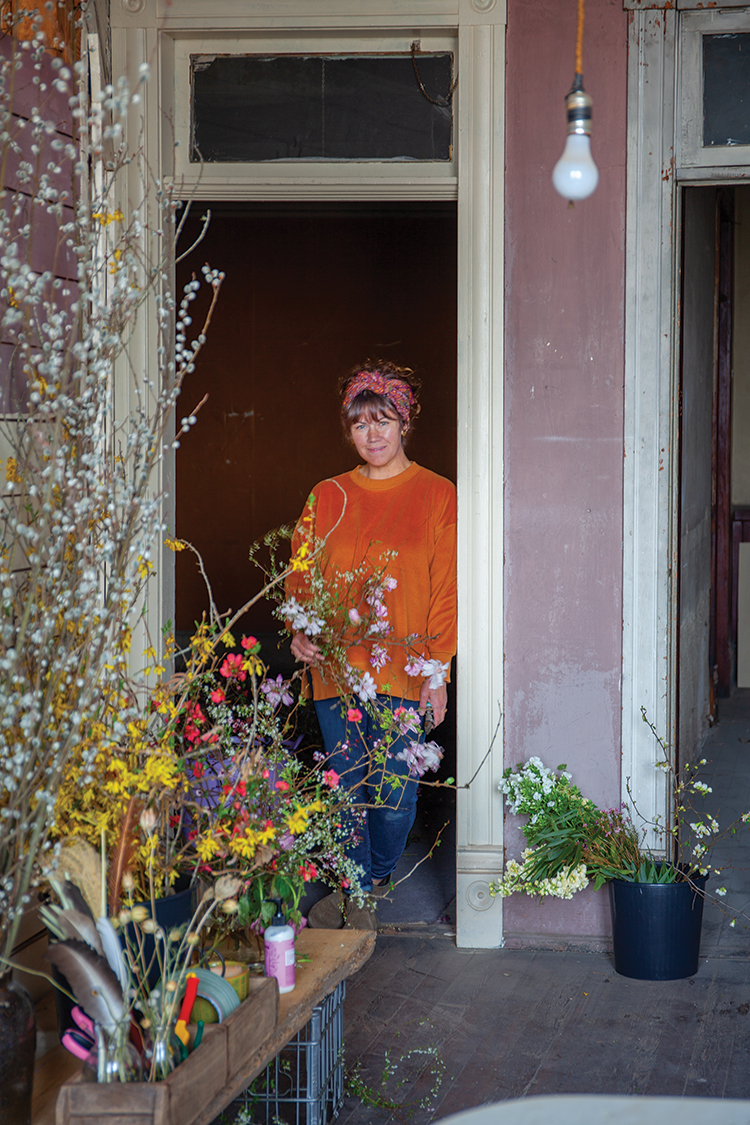
Looking back over the course of my life I think I was always meant to be a designer. Growing up on a 150-year-old farm, there were many opportunities to ramble through woods and meadows. I fondly recall gathering blooming branches and wildflowers to bring indoors and arrange with my hands. My mother was always making arrangements, wreaths and garlands seasonally, so I learned from an early age to relish the natural rhythms of the seasons.
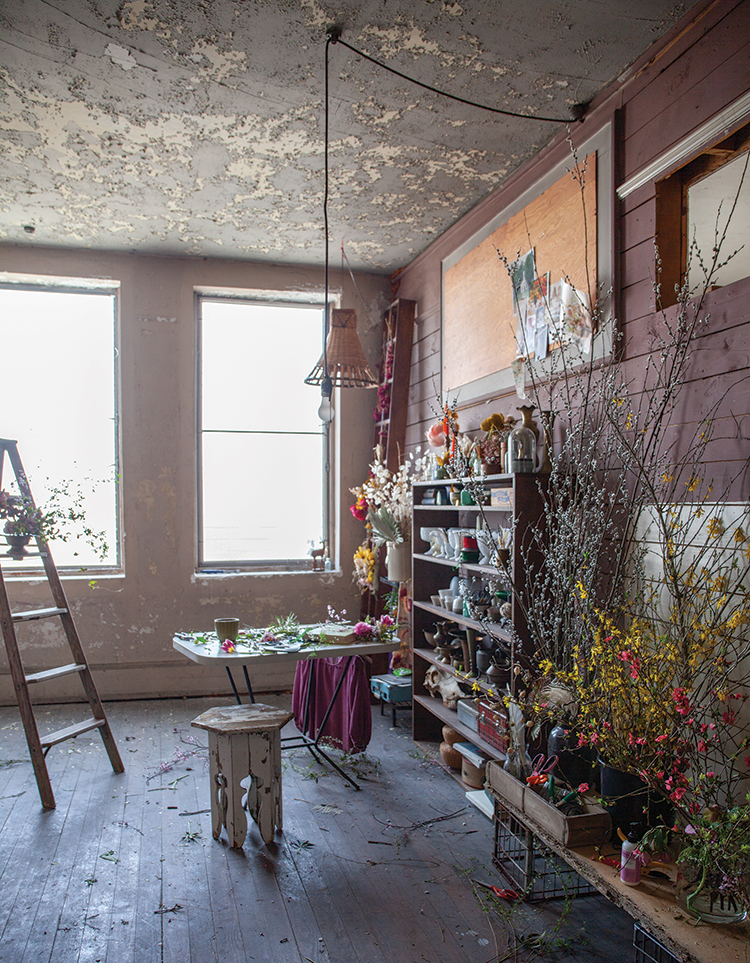
That is so much of the heart of what I do now. Seasonal and sustainable floristry is what feels right for me, and what I have such a deep connection to. I feel like it’s my responsibility to educate people about the dangers of using the traditional fl oral foam as a mechanic. There are initiatives to find replacements for the traditional water-soaked foam that is placed in a vessel or used as a structure and is believed to keep the flowers fresh for longer periods of time. These manufactured products contain phenol-formaldehyde as a key ingredient, are very dangerous to handle, and are carcinogenic. They also contain micro plastics that are not compostable, not recyclable, and never break down. Sustainable florists speak up against the use of these materials, seeking new alternatives to foam.
I also source flowers from local farms instead of mass-produced flower farms that fl y their product in. In essence, a seasonal and sustainable florist considers 3 primary factors. First, it’s important to rethink the mechanics we use; second, reduce our waste stream; and third, be selective in how we source and distribute locally grown flowers. Responsibly sourcing flowers flows in alignment with seasonal floristry by buying local, or growing your own, and supporting the seasonal flower movement, which is using what is in season in your growing area.
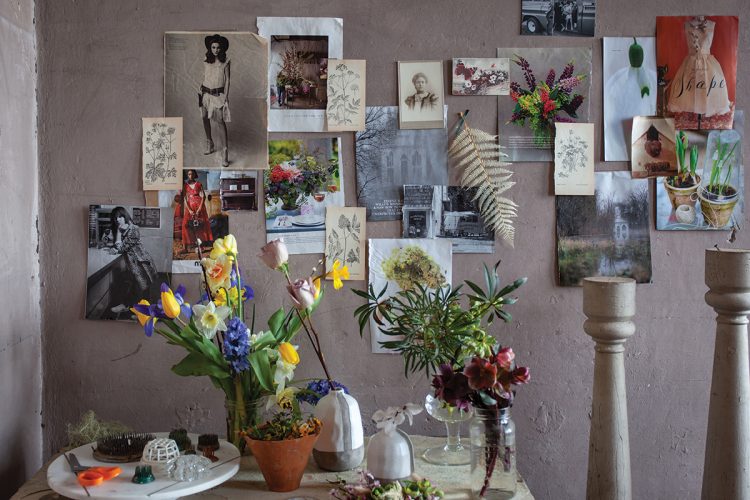
Winter becomes a time of deep rest and restoration. As the plants go dormant and turn inward and the roots rest and take nourishment, so do I. I sleep and read and listen to the rain and journal. Activities like slow comforting cooking and snuggling my kids consume more of my attention. As spring nears, buying seeds and planning my cutting garden, with my brides in mind, gives me the opportunity to dream and be intentional about how I will work with nature in the coming year to feed my family and my soul.
Without fail, spring arrives as it always does with germinating seeds, preparing beds, and working with the fragrant blooms that are signature to this invigorating time of year. Where I live, spring means hellebore, quince, anemone and ranunculus. Snowdrops and daffodils, forsythia, hyacinth and spirea, among many others. Early summer breaks way into lots of wedding work and the peonies, delphinium, dogwood branches and iris bloom, followed by zinnias, cosmos and all the bright and juicy colors. Autumn is my most favorite season to work in. Something about the warm earth tones and muted colors appeal to a history deep within me. Maybe it’s my love of things rusty and aged, but I feel connected to the colors, and the decaying foliage that leave the air feeling antiqued.
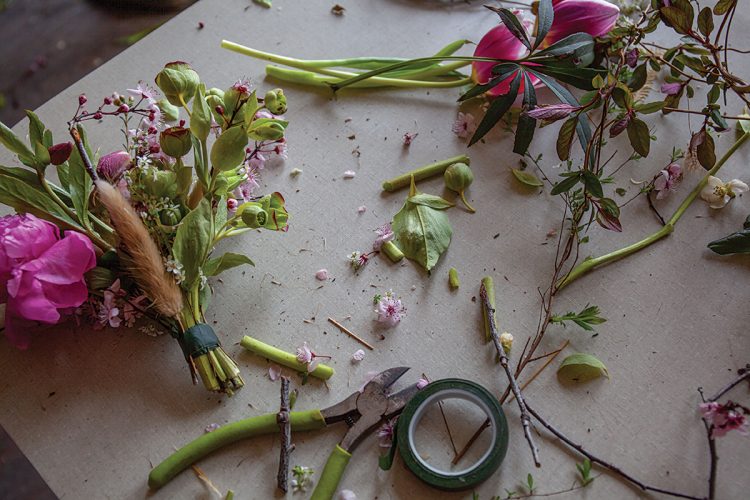
One of the most fun and exciting parts of what I do is nurturing the relationships and friendships that I have made with the abundance of local flower farmers in my area, and with the volunteers at a local nonprofit farm I have been part of for many years. In addition to talking shop, we share in the ups and downs of life, the grief and joy that is the human experience. It is not only enjoyable to research who grows locally, but to make the connections that lead to lifelong friendships. If I could infuse a bit of grower advice into your life, it would be to visit your farmers market on a Saturday morning, and talk with the growers themselves. Ask if you can order flowers in a specific color palette or buy a growers choice bundle just to play! With a few simple tools, you too can create arrangements that will bring beauty, warmth and life into your home.
I love supporting the local growers, not only for the relational benefits, but because I find that the quality of the blooms is heartier. Local blooms tend to last longer, and the stems are more supportive. Importing flowers often comes with the added baggage of exploited work conditions, employees being paid poverty level wages and flowers are often sprayed with high levels of toxic substances. Choosing to be a sustainable florist does not begin and end with ditching foam and staying away from plastics. The entire process of working within a sustainable model, demands that one examine each stage of design, and decide what can be done to lessen harmful environmental impacts.
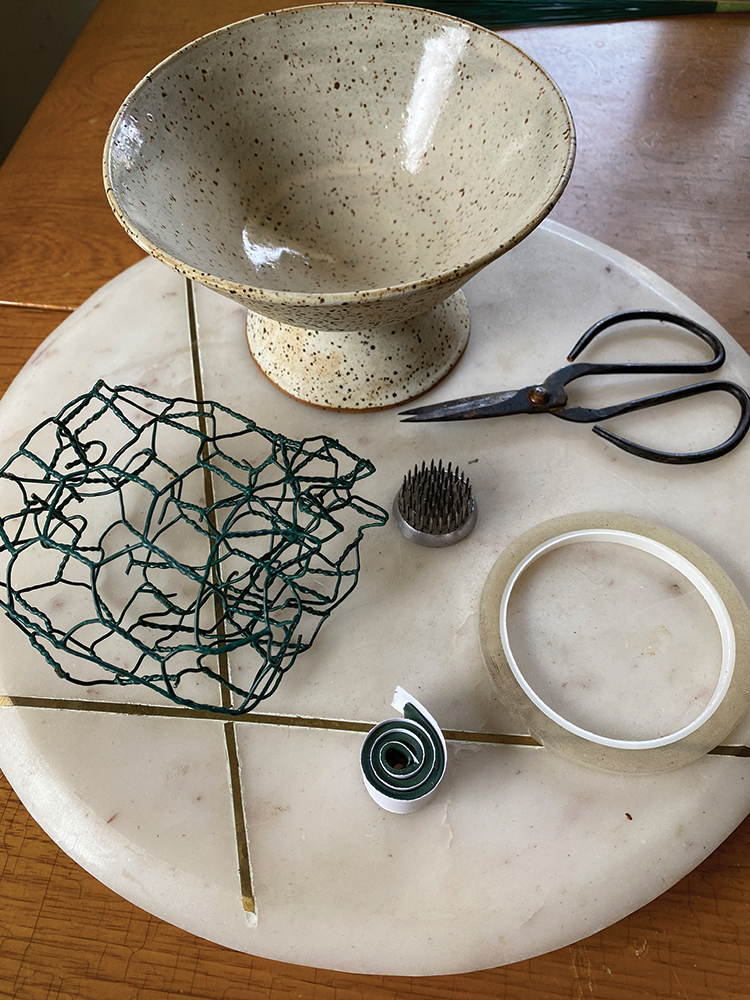
To gather your supplies, there are a few simple tools and materials you will need. Start with what you have and go from there. Choose a vessel that you love, whether it’s a family heirloom that has special meaning, a vintage tin or pretty glass bottles that you can cluster. It’s also exciting to hit the secondhand shops for something new to you and will perhaps inspire an idea that you weren’t even prepared for! Good snips, plastic coated chicken wire, some narrow clear plastic floral tape, and florist putty can be easily picked up at a local craft supply. A metal pin frog is also a great item to have in your toolkit. Pin frogs can often be found at antique shops, gardening centers or of course, online. Having these items on hand not only allows you to be ready for whenever you feel inspired to play around with floral design, but these materials can be used repeatedly, resulting in little to no waste with the products and process.
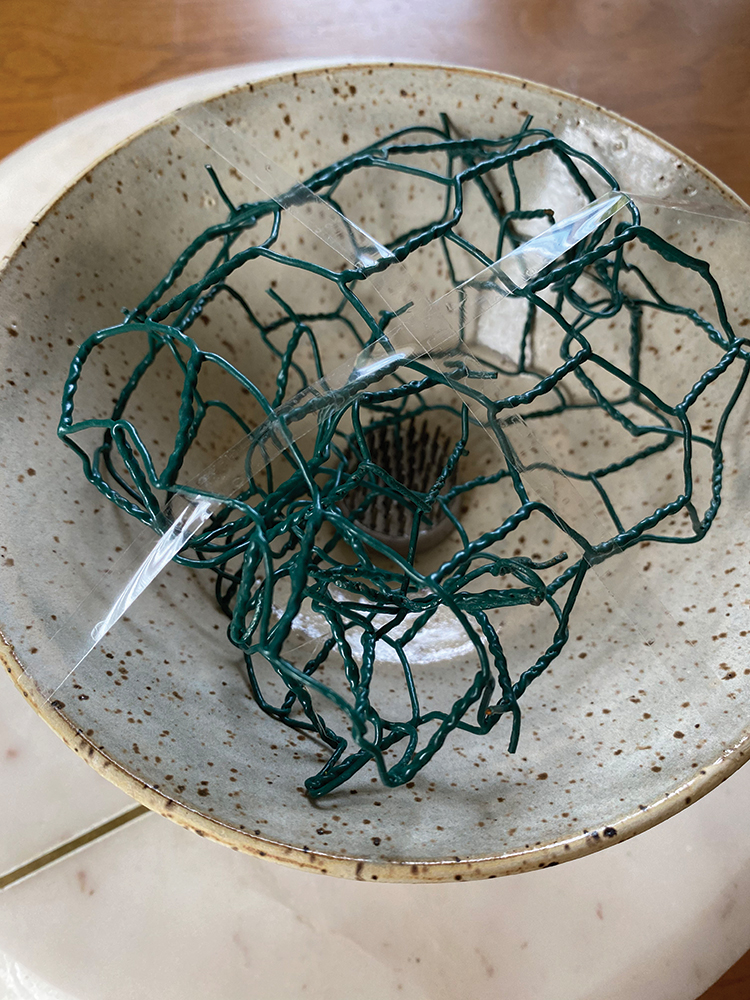
STEP 1 | CHOOSING AND PREPARING THE VESSEL. Choose a vase or container that matches the desired width and depth that you’re going for. To prepare the vessel, attach floral putty to the bottom of the floral frog and secure to the bottom of the vessel. This provides support for woody stems or heavier blooms. Next, fit a ball of chicken wire into the vessel and tape the top in a grid or X shape. The chicken wire steadies the flowers and provides pockets for the blooms to rest against.
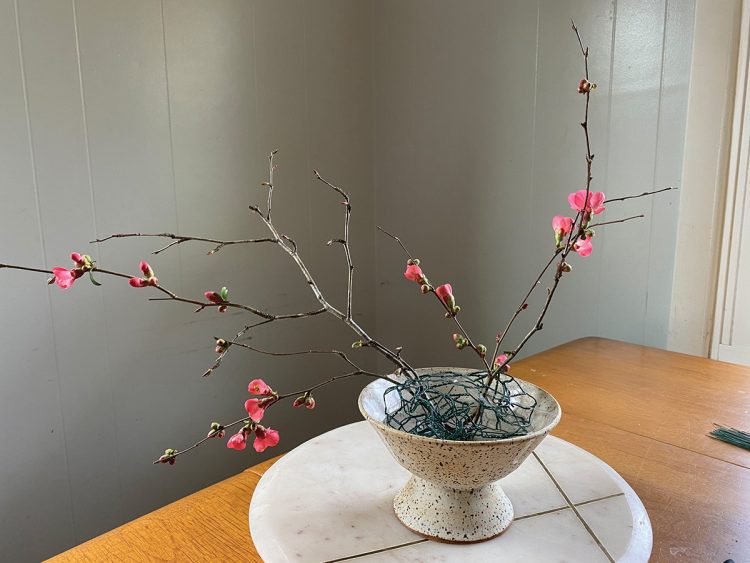
STEP 2 | STRUCTURAL ELEMENTS: BRANCHES = BONES! Seasonal branches with interesting structure start your base and give it an organic shape to build off of. This is the point to create asymmetry and dimension.
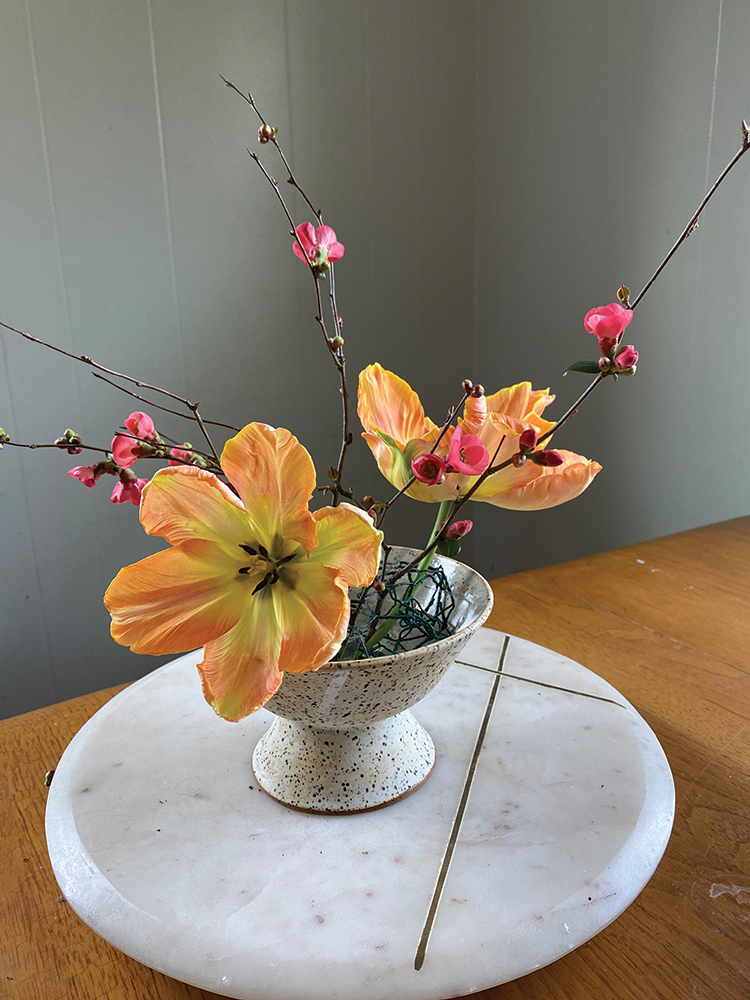
STEP 3 | ADD “THE QUEEN.” Peonies, garden roses, lilies or other showier blooms that you will build your arrangement around. This will be the focal flower or element that you’re prioritizing to showcase in your arrangement.
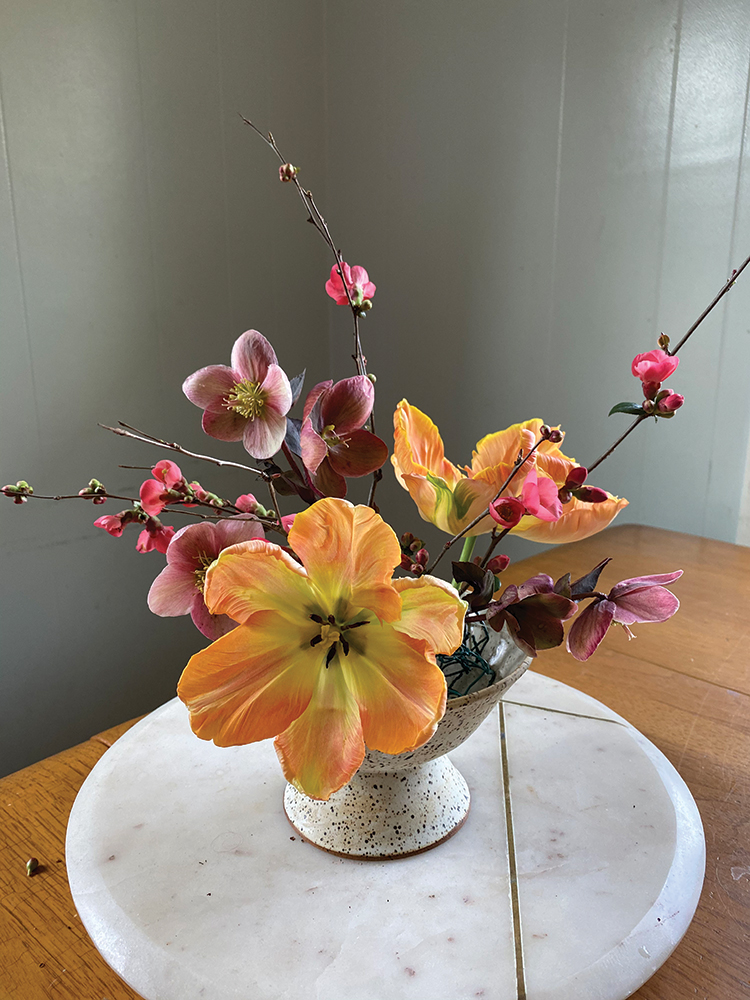
STEP 4 | GREEN IT UP! Foliage + green elements around the base of the arrangement. Build up your base layer with greenery and filler foliage for a full and balanced look.
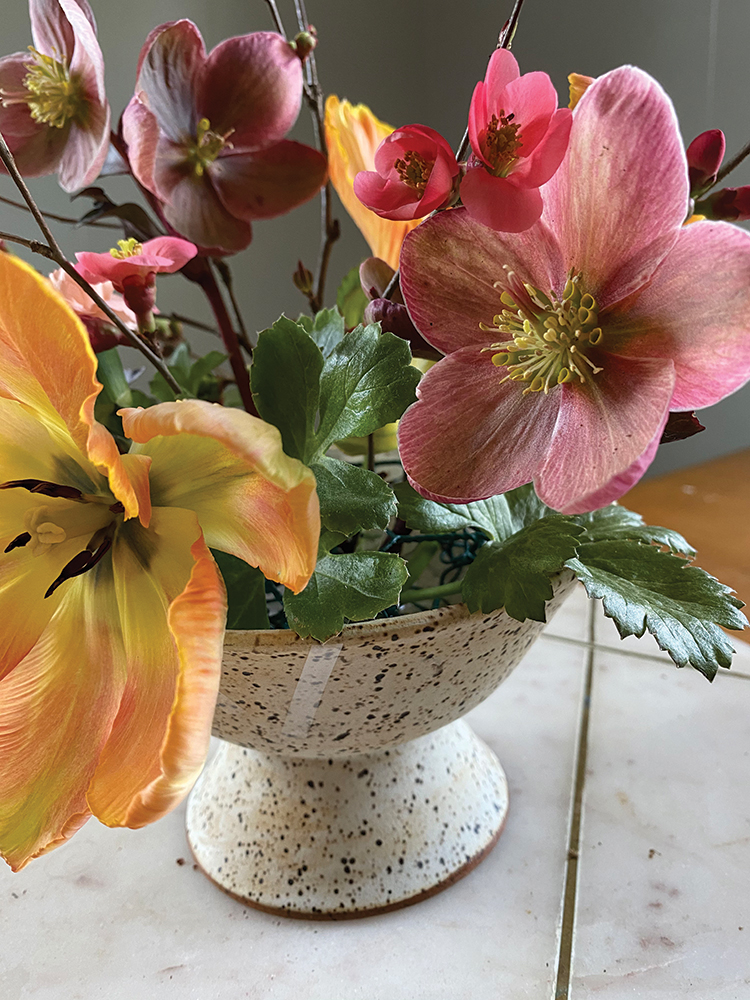
STEP 5 | NEGATIVE SPACE. Go in with filler flowers or moss down below to create negative space in the arrangement. Keep in mind that negative space draws your eye through the arrangement and inspires visual interest.
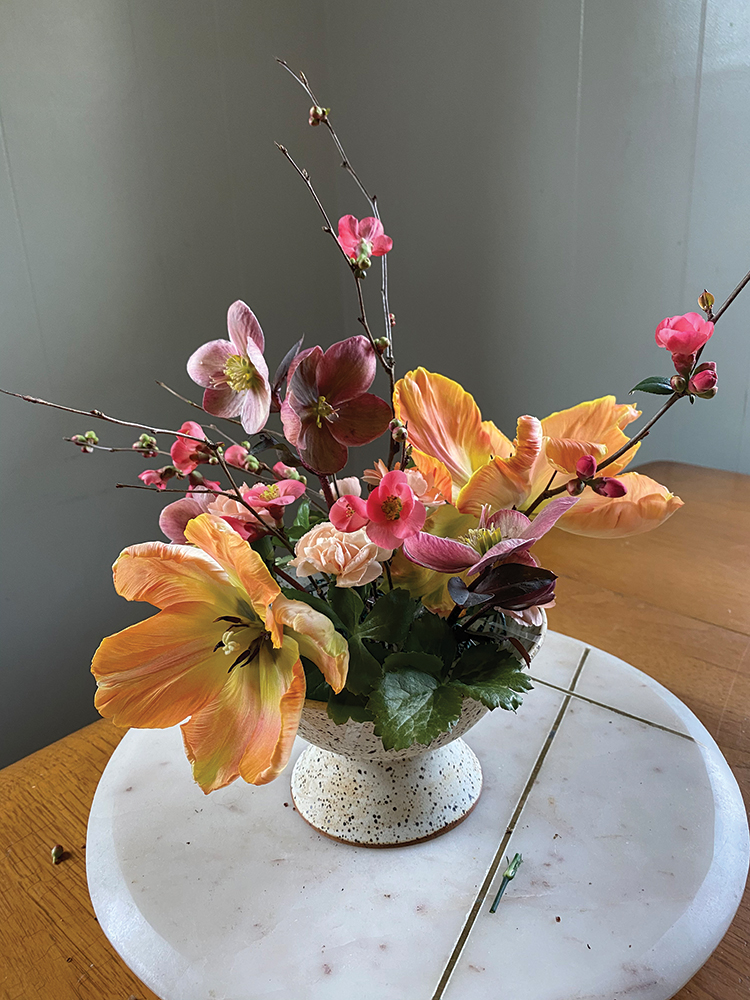
STEP 6 | CHECK FOR HOLES. Look at your piece from all sides to check for balance and any gaps in florals.
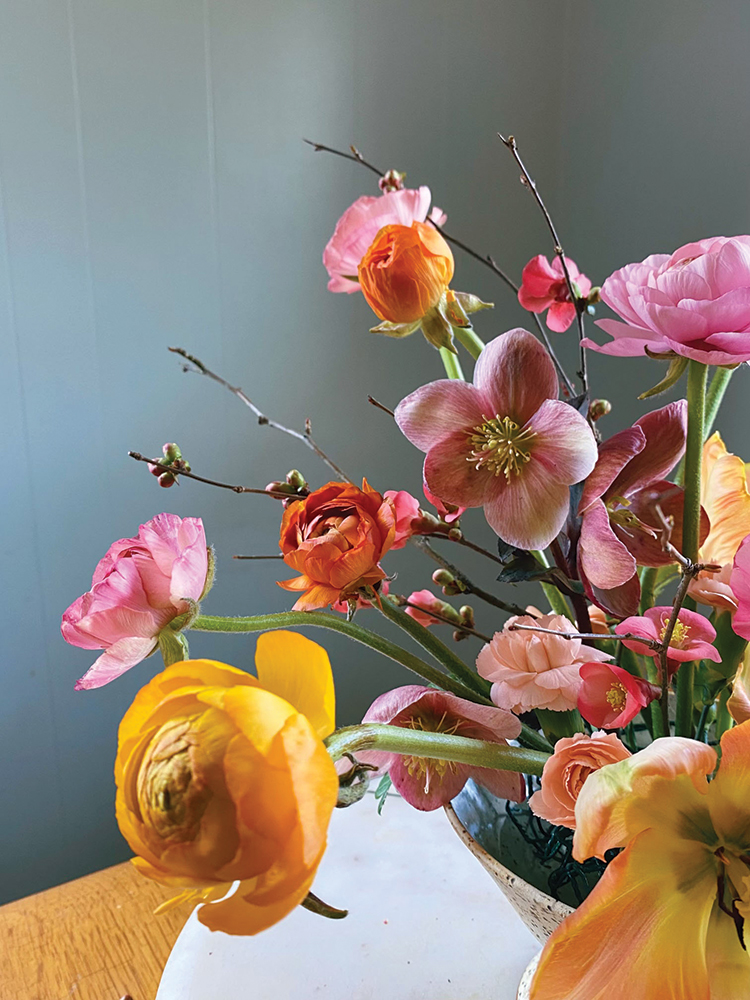
STEP 7 | THE DANCER. The final step is the addition of a special bloom that has a beautiful silhouette or delicate drape.
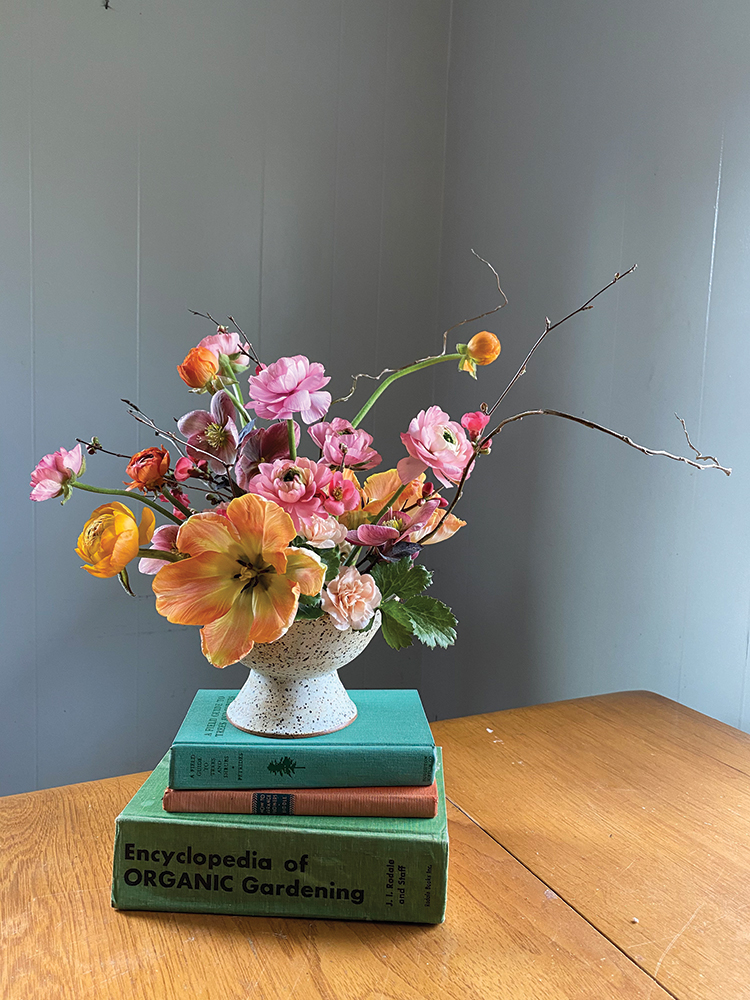
Go take a wander through the woods! Plan a picnic and escape for the day. My kids have grown up with a florist mom and have spent a lot of time in the studio with me so they know what to look for when foraging, but we often just use it as an opportunity to hike and be in nature together. We just embrace and use what is beautiful and in our backyard during all 4 seasons. We look for branches with interesting shapes, colorful greenery or berries that will give a pop of color to mix in with blooms we grow or wreaths or garlands we are making.
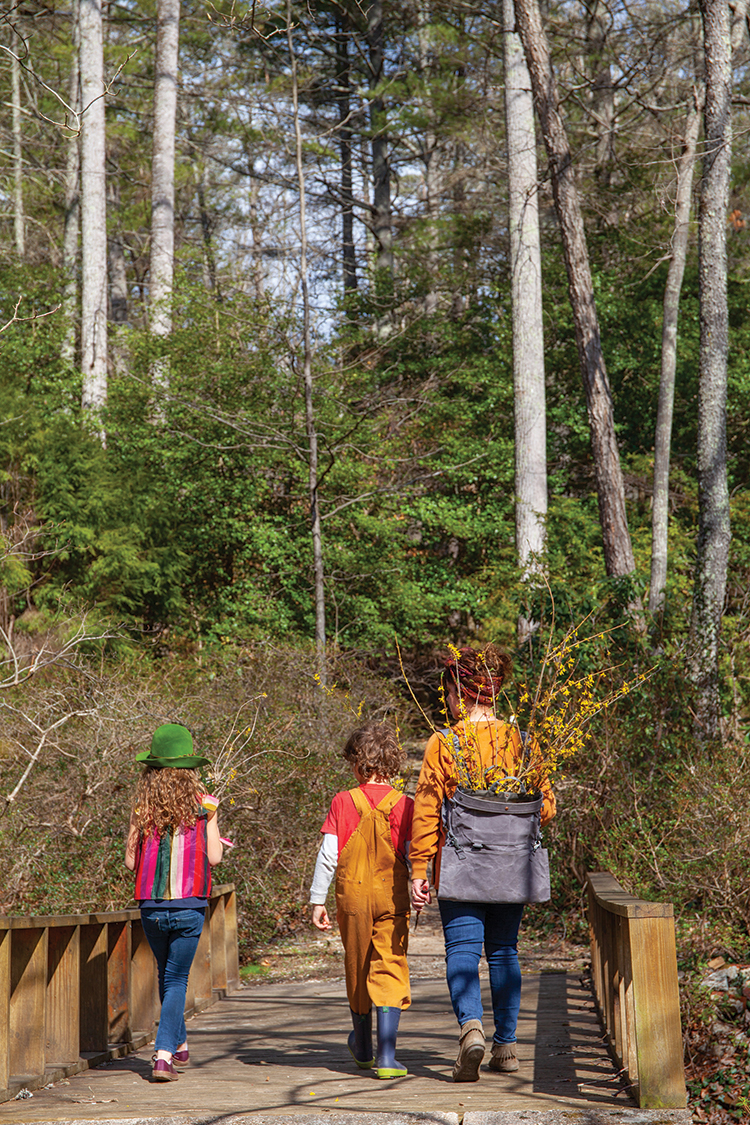
I have a foraging pack that I love which holds water, making storing my findings easy. I will grab my bag, my snips, the kids, and we just go. In these photos we are foraging on a dear friend’s property, where she has an abundance of camellia, forsythia and early magnolia blooming in the late winter. One important note is to not forage in national or state parks, and always ask permission to take clippings from private property. Anytime I have ever asked, I’m usually met with a warm response. Maybe you have a neighbor that has incredible tree of peonies and asking to cut one or two opens up the possibility to a new friendship. You would be surprised how much flower people love to share.
“It is a serious thing just to be alive on this fresh morning in this broken world.”
— M. Oliver
I once met a lady at a local playground who was with her granddaughter, and we struck up a conversation about flowers and I realized that she lived in a quaint home nearby that I had admired for many years. As the conversation went on, she mentioned what was blooming on her property and asked if I would like to come by sometime. Of course, I did, and not only have we become sweet friends, but she calls me now to tell me when her quince and hellebore are blooming. I still go by and cut things from time to time. That friendship means so much to me now. I made a flower crown for her wedding, we have tea outside by her fire pit on winter days, and she gifts me figs from her tree in late summer.
What has become most meaningful in my life is family, art, time, community, friendships, reading books, music, pursuing my passions and coming home. I spent many years traveling the world and having wild adventures before I was married with kids, and that shaped me. I miss that life sometimes, but I am so content right where I am.
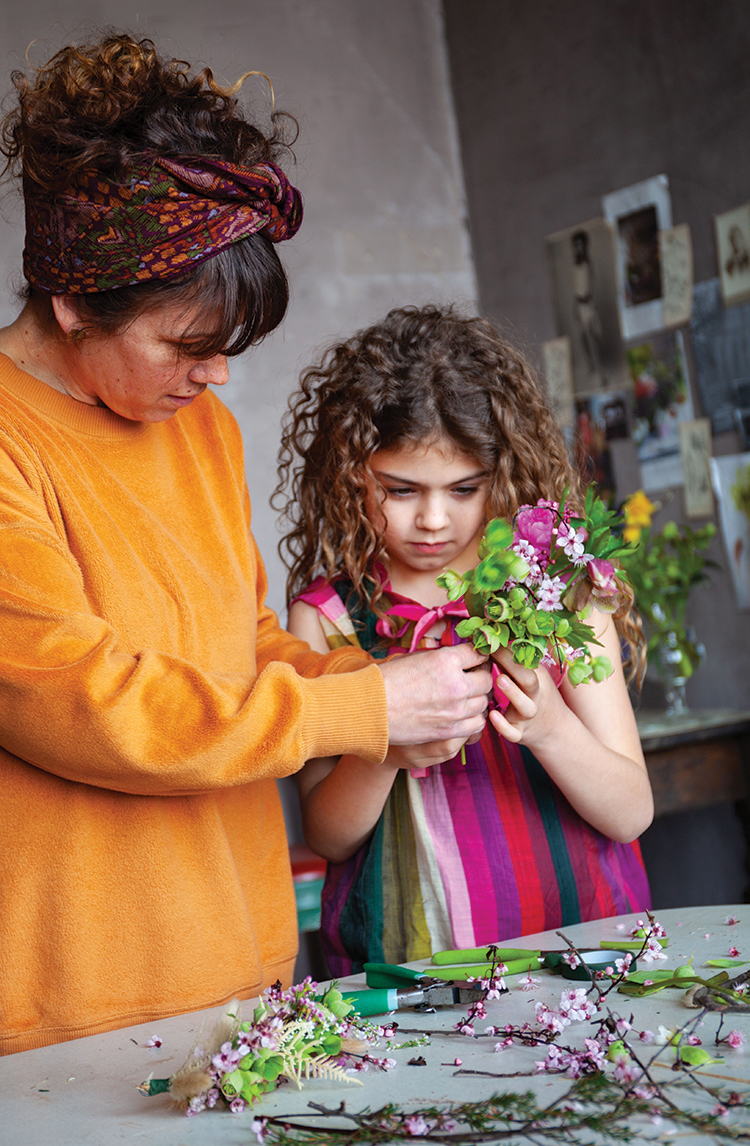
Slowing down during 2020 helped me reconcile the reasons that I kept myself so busy before. My mental health suffered by always being on the go, and I avoided doing the work of seeking support for patterns that no longer served me. Coming through this year I have leaned deep into my knowing, going through the hard to find the beauty on the other side. I still have so much to learn, but I’m getting better about creating space for balance, being intentional and trusting myself.
Time in the woods alone or with my kids is incredibly healing for me. Slowing down and noticing the little things help me to have gratitude and enduring love for my people and the earth.

